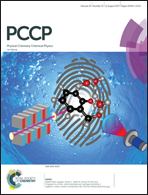A triaxial tensile deformation-induced nanoporous structure of aluminium: estimation of surface area, solid volume, and dimensionless aspect ratio
Abstract
Nanoporous aluminium has great importance for large scale production of automobile and aerospace spare parts due to its lightweight and non-corrosive nature. It is also suitable for various packaging applications of edible things, electronic components, and medicines. We have used triaxial tensile deformation methodology to create a nanoporous structure of aluminium using molecular dynamics simulation. The surface area and solid volume have been calculated to characterize the 3-D nanoporous structure of aluminium. We have quantitatively characterized the growth and coalescences of the nanoporous structure via estimation of the number of nanopores, nanopore diameters, and dimensionless aspect-ratios (surface area to volume ratio). A high aspect ratio indicates a large number of tiny nanopores in the 3-D nanoporous structure of aluminium. We have found that crystalline aluminium (under ambient condition) significantly depicts a smaller aspect ratio as compared to amorphous aluminium during triaxial tensile deformation. We believe that the results of this study will provide new understanding to the researchers for the design and characterization of nanoporous metals.



 Please wait while we load your content...
Please wait while we load your content...